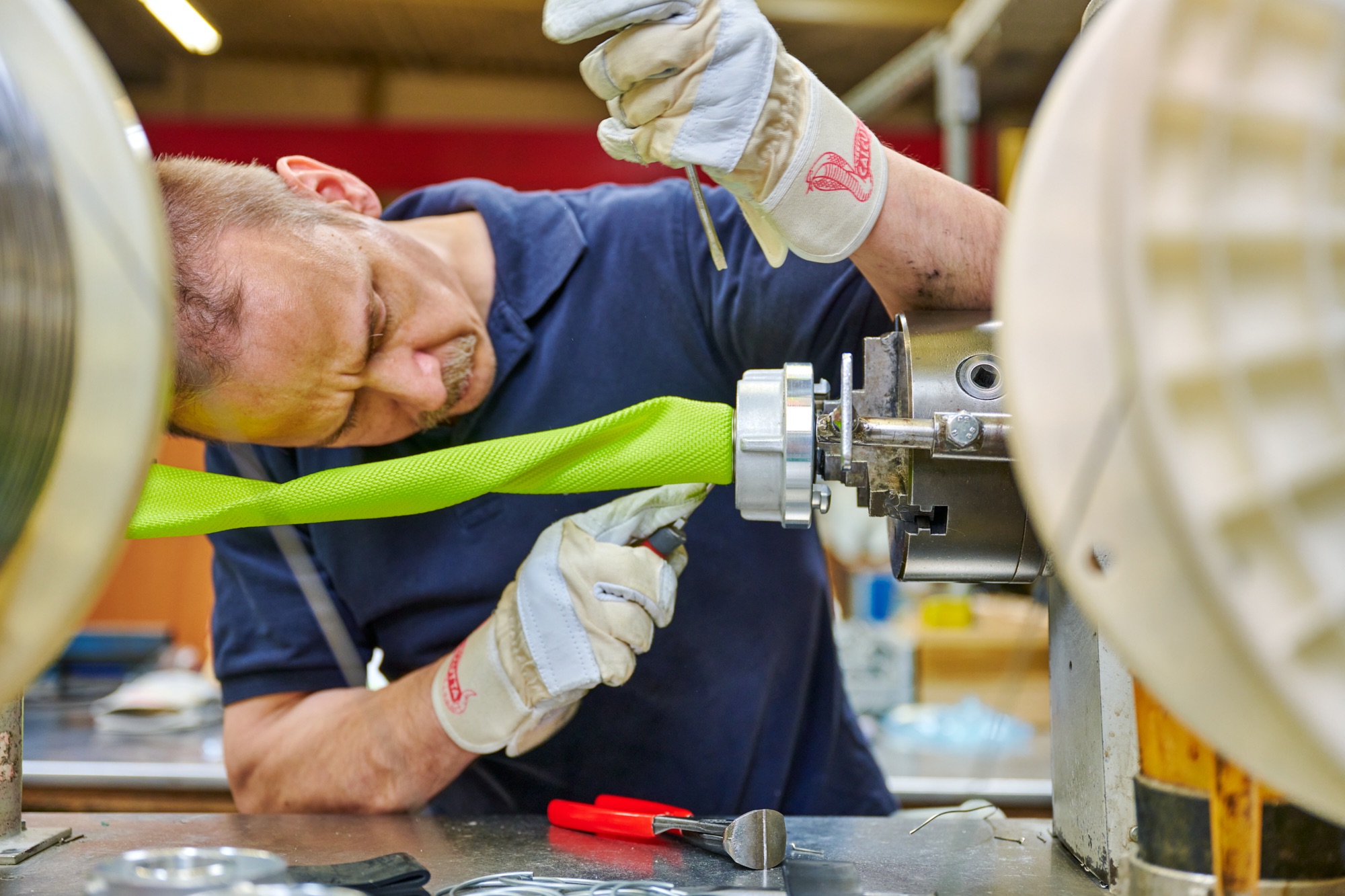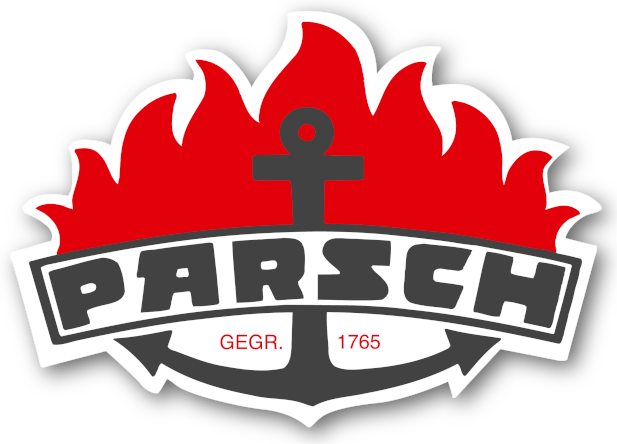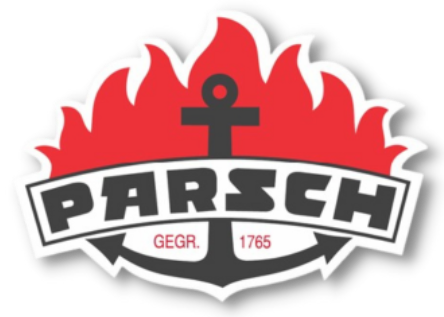Flat Hose Treatment & Care
This is how you extend the service life of PARSCH flat hoses.

➝ Introduction
Fire hoses, when in use for firefighting, are naturally subject to extremely rough handling, which is inevitable. Nevertheless, much can be done to prolong the service life of the hoses.
It is crucial to take care of the hoses during use as well as during drills, plus the maintenance of the hoses after use and during storage.
Maintenance of pressure hoses during use and also during exercises
Apart from abrasion and pressure surges – which are probably the two most common causes of damage – the following should be noted:
✓ Do not exceed the maximum working pressure.
✓ Lay out the hoses without any kinks or twists.
✓ Do not pull or drag the hose unnecessarily over the ground, always only roll (!), especially in case of rough ground. If this is unavoidable, drag or pull the hose lying flat, not on the edge.
✓ Dragging or pulling the kinked hose, especially when it is partially or completely filled with water, immediately causes the extremely damaging “point abrasion”. During actual use, such handling may well be unavoidable, however, the damage caused by it is beyond the manufacturer’s responsibility.
✓ When laying out and rolling up the hoses, dropping the hose ends with the couplings onto the hose and also onto the floor should be avoided in order to prevent crushing or damage to the inner rubber coating.
✓ Rubbing of the hose due to vibration of the fluctuating pressures should be avoided by using bandages or burlap.
✓ Do not lay or pull the hoses over sharp or pointed objects and edges.
✓ Pressure shocks (water hammer) should be avoided.
✓ Hoses laid on ladders or hanging freely should be secured and relieved with hose holders.
✓ Hoses should not be brought into contact with fire embers.
✓ Do not step on the hoses to force out water. By raising the hose to shoulder height, allow the water to drain out.
✓ The hoses should be kept away from hazardous materials, acids, mineral oils, and chemicals wherever possible.
✓ Frozen hoses must not be rolled or kinked by force. (Defrost beforehand!)
✓ Never drive over empty or filled hoses. In this case, hose bridges must be used.
Care of fire hoses after use or after each exercise
✓ After use or exercise, the hose should be carefully brushed clean of regular dirt and dust, scrubbed with clean water, or washed with a hose washing machine.
✓ Contaminated hoses should be soaked and cleaned with warm water and detergents. Afterwards, the hose should be rinsed out and washed with clear water.
✓ Prior to cleaning, the hoses should be tested for service pressure in accordance with the relevant hose standard. Splash marks, abrasion damage, cuts or punctures should be marked for necessary repair or hose shortening.
✓ The hose couplings should be checked for sharp or rough edges before storage so that the hoses are not exposed to damage during storage.
✓ The wet, cleaned and inspected hoses should be carefully dried, most expediently in a tower drying facility without sunlight.
✓ To prevent mold or fungal growth, the hoses should be stored or placed in the vehicles in dry condition.
✓ The hose storeroom should be dry, airy, and frost-free (+6 °C to +23 °C). The hoses should be stored rolled on open shelves.
Pressure tests of hoses and binding
Reasons for testing
To ensure that the hoses are prepared to meet the requirements of the next operational use, they must be tested for service pressure in accordance with the relevant hose standard after each operation or exercise.
Recommendations
Each length of hose, including couplings, should be checked regularly, e.g.: min. every 12 months and after each use or exercise with the intended working pressure for at least one minute.
If any damages are found, the hose should be marked, repaired, shortened, or replaced immediately!

